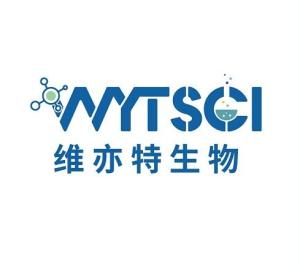
|
JPH203
- 英文名称:JPH203
- 品牌:WYTSCI
- 产地:进口
- 型号:1MG
- 货号:WT-AY-B11217
- cas:1597402-27-1
- 价格: ¥1/mg
- 发布日期: 2025-04-10
- 更新日期: 2025-12-08
产品详请
| 产地 | 进口 |
| 品牌 | WYTSCI |
| 货号 | WT-AY-B11217 |
| 用途 | 科研检测 |
| 英文名称 | JPH203 |
| 包装规格 | 1MG |
| CAS编号 | 1597402-27-1 |
| 别名 | JPH203 |
| 纯度 | 98+% |
| 分子式 | |
| 是否进口 | 是 |
纯度:>98% by HPLC;NMR (Conforms)
分子式:C23H19Cl2N3O4·2HCl
分子量:454.24
溶剂:DMSO (>25 mg/ml)
性状:Pale orange/yellow solid
存储:-20°C
Activity (short version):LAT1 inhibitor
Function / Pharmacology:Selective L-type amino acid transporter 1 inhibitor (LAT1 or SLC7A5; IC50 = 140 nM for 14C-leucine uptake in S2-hLAT1 cells, and 60 nM for HT29 human colon adenocarcinoma cells: growth inhibition IC50’s = 16.4 μM and 4.1 μM respectively for S2 and HT29 cells).1 Also active in HT-29 mouse xenograft models. JPH203 is active in a variety of cancer models and has progressed to clinical trials.2 It sensitized A549 and MIA Paca-2 cells to radiation by enhancing cellular senescence via mTOR downregulation3 and sensitized EGFR-expressing cancer cell lines to gefitinib therapy4. JPH203 treatment of non-small cell lung cancer cells led to downregulation of PD-L1 suggesting that LAT1 inhibition may help overcome the immune suppressive tumor microenvironment.5
分子式:C23H19Cl2N3O4·2HCl
分子量:454.24
溶剂:DMSO (>25 mg/ml)
性状:Pale orange/yellow solid
存储:-20°C
Activity (short version):LAT1 inhibitor
Function / Pharmacology:Selective L-type amino acid transporter 1 inhibitor (LAT1 or SLC7A5; IC50 = 140 nM for 14C-leucine uptake in S2-hLAT1 cells, and 60 nM for HT29 human colon adenocarcinoma cells: growth inhibition IC50’s = 16.4 μM and 4.1 μM respectively for S2 and HT29 cells).1 Also active in HT-29 mouse xenograft models. JPH203 is active in a variety of cancer models and has progressed to clinical trials.2 It sensitized A549 and MIA Paca-2 cells to radiation by enhancing cellular senescence via mTOR downregulation3 and sensitized EGFR-expressing cancer cell lines to gefitinib therapy4. JPH203 treatment of non-small cell lung cancer cells led to downregulation of PD-L1 suggesting that LAT1 inhibition may help overcome the immune suppressive tumor microenvironment.5









